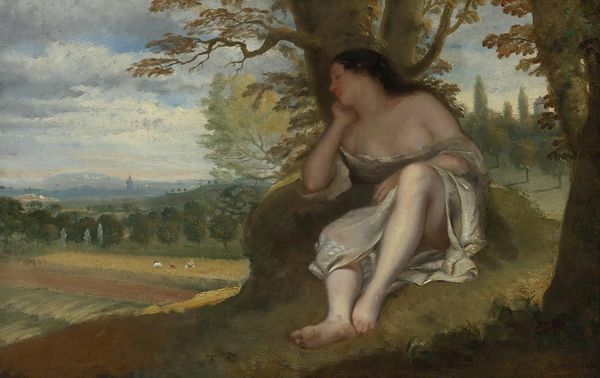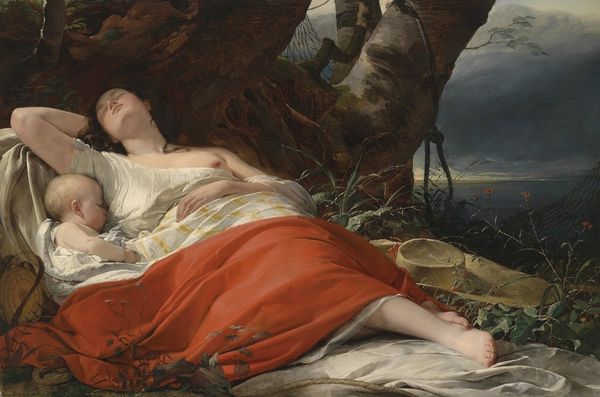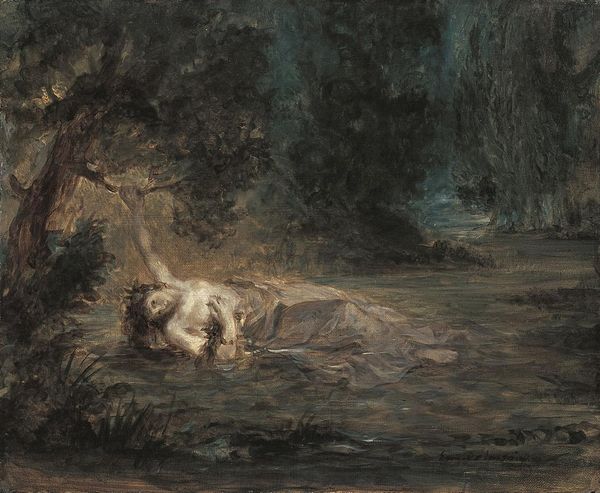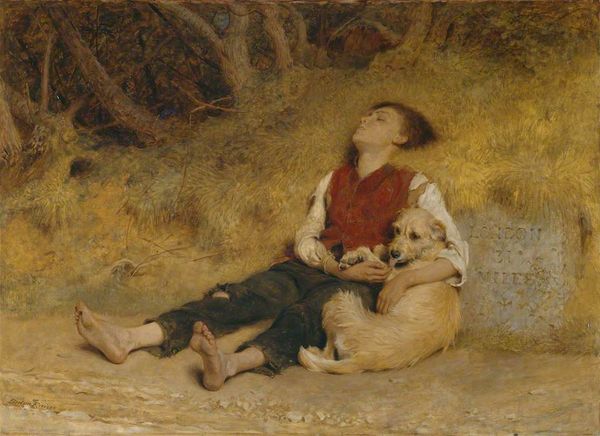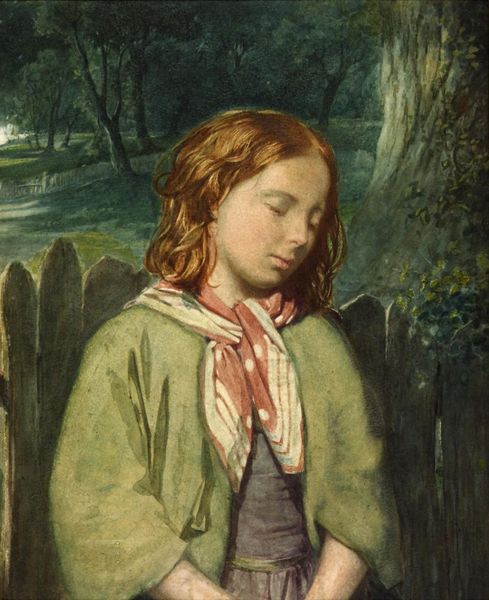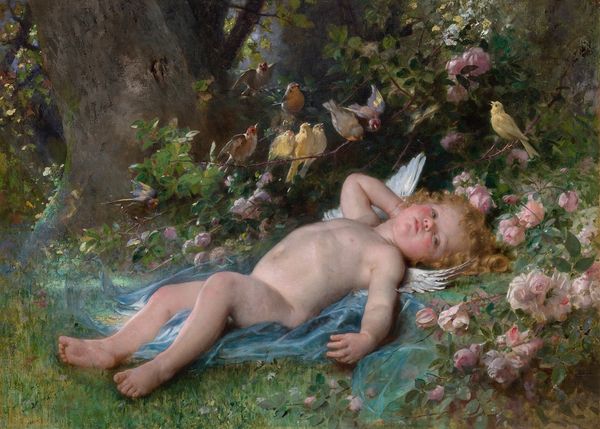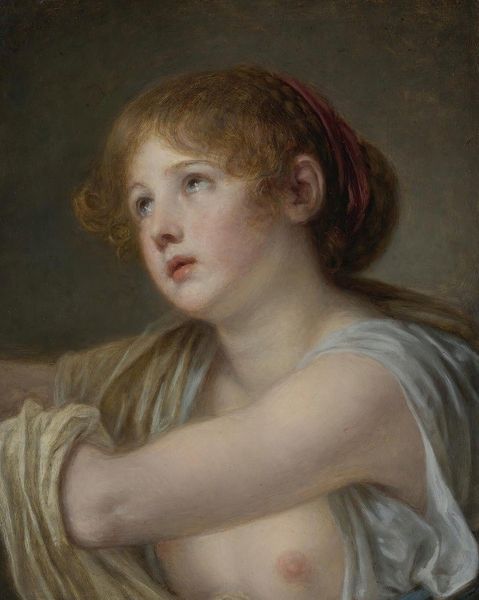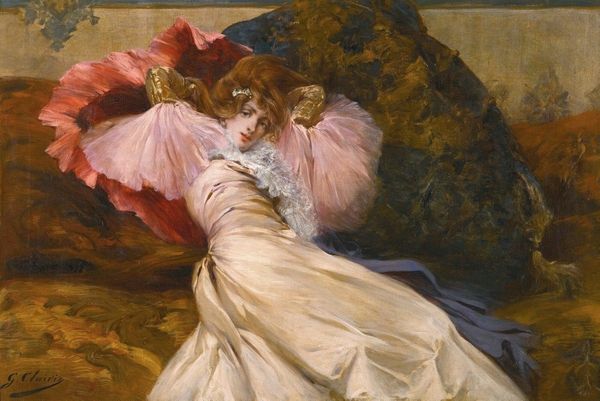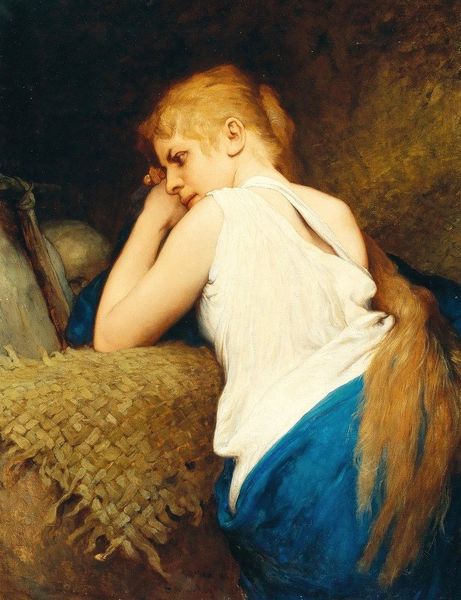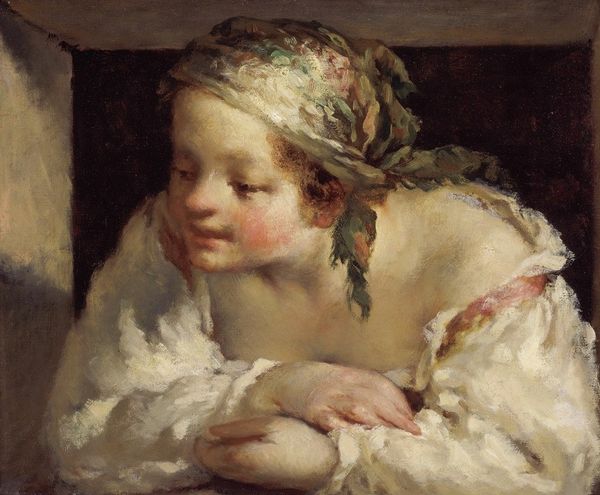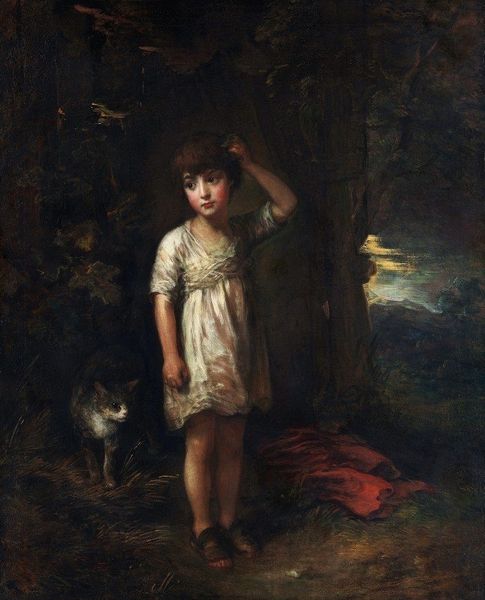
Copyright: Public Domain: Artvee
Editor: We’re looking at Jean-François Millet’s “Bergère dormant à l’ombre d’un buisson de chênes,” or "Shepherdess sleeping in the shadow of an oak bush," made around 1874. It’s a pastel drawing. The scene is incredibly peaceful; what’s your take on it? Curator: It’s tempting to romanticize these scenes of rural life, but we have to remember the realities faced by working-class women in 19th century France. The shepherdess’s rest wasn’t a luxury; it was likely born of exhaustion in a harsh existence. Editor: I see your point. The painting almost seems to reinforce this idea of peasant life being very simplistic. Curator: Exactly. Paintings like this played a role in shaping the urban view of rural life. Millet became famous for these very images; the urban Salons adored these depictions, didn’t they? What are we, as a culture, saying through the veneration of certain images? It's about an invented past rather than real representation. Editor: So, it's less a documentary and more a kind of projection? Curator: Precisely. Even the 'realism' label that gets applied to Millet needs a critical eye. The image offers comfort in the idea of a pre-industrial simplicity even as France underwent massive social change. Who benefits from perpetuating this narrative? Editor: That reframes the work entirely. I hadn’t considered the role of the viewer in constructing its meaning, especially considering how his work was championed. Curator: Art serves multiple purposes; its intention when created doesn’t solely define what it means decades or centuries later. Understanding the cultural landscape surrounding a work and its subsequent reception gives us a fuller understanding. Editor: Thanks for shedding light on how art interacts with culture and societal views! Curator: A pleasure! Keep looking closely; keep asking "Why?".
Comments
No comments
Be the first to comment and join the conversation on the ultimate creative platform.
